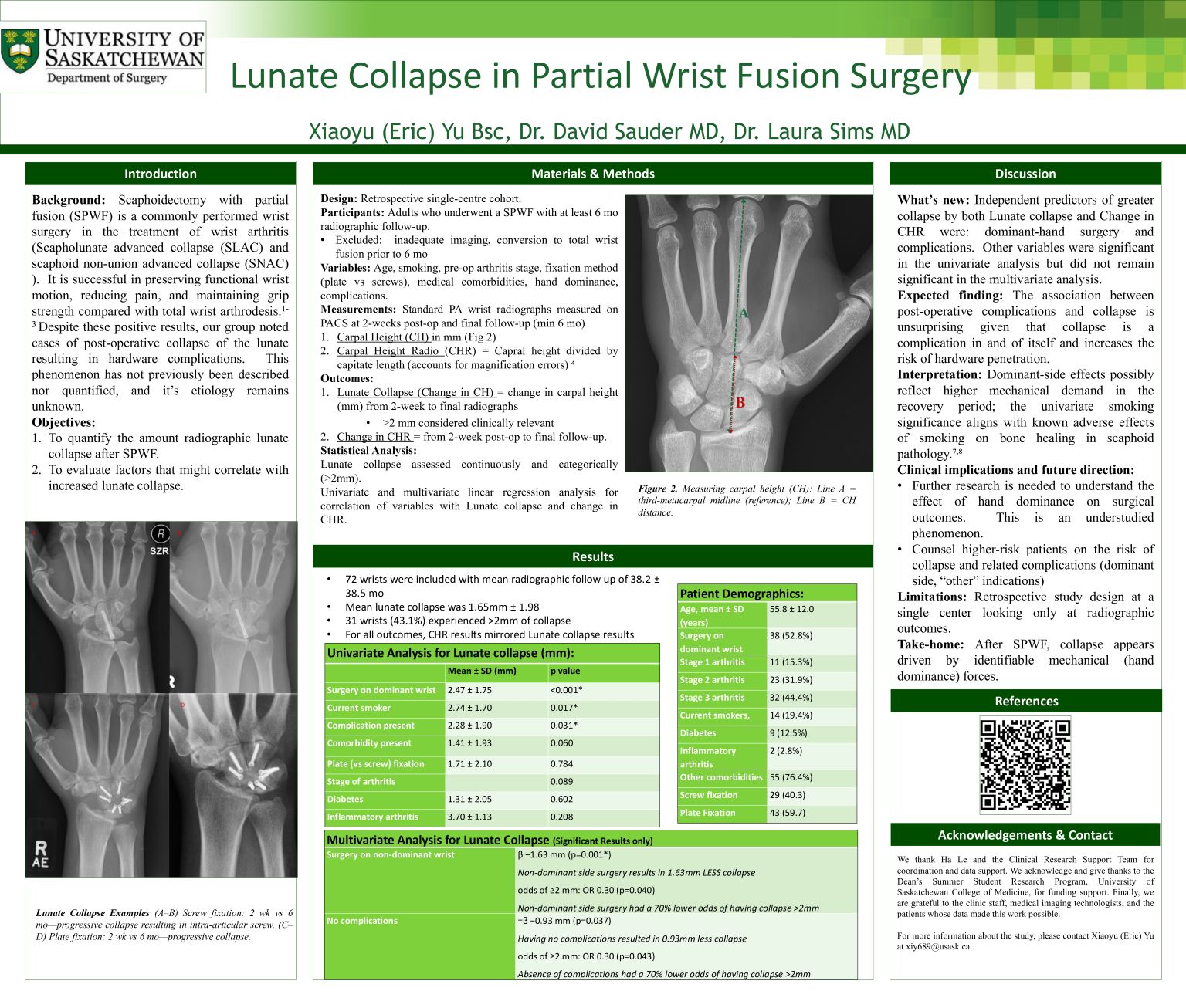
Lunate Collapse in Scaphoiectomy with Partial Wrist Fusion
Eric Yu
Background: Scaphoidectomy with partial wrist fusion (SPWF) treats wrist arthritis while preserving motion, but drivers of postoperative carpal collapse remain unclear.
Methods: Retrospective single-centre cohort of adults undergoing SPWF. Immediate postoperative and final PA radiographs were measured for carpal height (mm) and carpal height ratio (CHR). Primary outcome: change in carpal height; clinically significant collapse: ≥2 mm. Univariate and multivariate analyses evaluated associated patient, disease, and surgical factors.
Results: Seventy-two wrists were included (mean age 55.8 y; mean radiographic follow-up 38.2 mo). Mean collapse was 1.65 ± 1.98 mm; 31/72 (43.1%) had collapse ≥2 mm. In adjusted analyses, dominant-hand surgery and post-operative complications independently predicted greater collapse by both Δ carpal height and ΔCHR (all p<0.05). Several variables were significant in univariate testing but not after adjustment; notably, current smoking showed greater collapse on univariate analysis.
Conclusions: Nearly half of patients experienced ≥2 mm radiographic collapse after SPWF. Collapse appears driven by identifiable mechanical forces (hand dominance). The complications result is expected—collapse is itself a complication and may predispose to hardware penetration. Clinically, counsel higher-risk patients (dominant side), reinforce smoking cessation, and consider targeted radiographic surveillance. Limitations: retrospective single-centre study focused on radiographic outcomes.
